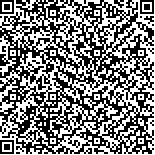| 本文已被:浏览 1090次 下载 656次 |

码上扫一扫! |
|
|
| 用于光波纳米推力器的颗粒供应技术和光聚积技术研究 |
|
于博1,2,3,刘鹏2,3,焦蛟1,康小录2,3,赵青1
|
|
1.电子科技大学 资源与环境学院 信息地学研究中心,四川 成都 611731;2.上海空间推进研究所,上海 201112;3.上海空间发动机工程技术研究中心,上海;201112
|
|
| 摘要: |
| 为提高光波纳米推力器在轨应用的可行性,针对与其匹配的颗粒供应技术和光聚积技术进行研究。提出整个推进系统的设计思路,通过建立理论计算和数值计算模型,分析颗粒供应技术和光聚积技术的各项核心结构参数的设计方法。计算结果表明:颗粒供应装置的正负电极内径之比(W/D)会影响正负电荷产生的总量之比,在W/D=300/322附近时,正负电荷比例接近1:1。静电诱导电压为9 V,当中和通道长度大于37.5mm时,正负颗粒可以视为完全中和。光聚积设计思路可令聚积球对光能的利用率在32.8%左右。两种相关技术的装置与推力器在结构上能够对接、在性能上可以匹配,从理论上表明了两种支撑技术的可行性。 |
| 关键词: 皮纳卫星 光波纳米推力器 颗粒供应技术 光聚积技术 |
| DOI:10.13675/j.cnki. tjjs. 180801 |
| 分类号:V439+.4 |
| 基金项目:那么,颗粒的充电时间与qmax和qthresh有关,即 |
|
| Investigation on Particle Supply Technology and Light Focusing Technology for Plasmonic Force Thruster |
|
YU Bo1,2,3,LIU Peng2,3,JIAO Jiao1,KANG Xiao-Lu2,3,ZHAO Qing1
|
|
1.Center for Information Geoscience,College of Resource and Environment,University of Electronic Science and Technology of China,Chengdu 611731,China;2.Shanghai Institute of Space Propulsion,Shanghai 201112,China;3.Shanghai Engineering Research Center of Space Engine,Shanghai 201112,China
|
| Abstract: |
| In order to improve the feasibility of the on-orbit application of Plasmonic Force Thruster (PFT), an investigation of the particle supply technology and the light focusing technology has been conducted in this paper. A design philosophy of the whole propulsion system has been proposed. Subsequently, a theoretical model and a numerical model have been established so that the optimal direction of several pivotal structure parameters of the two relevant technologies have been studied. According to the calculation results, the diameter of the positive and negative electrode depended on the ratio of the positive particle number and the negative particle number, and the ratio approximated to be 1:1 with W/D=300/322. The neutralization of the positive and negative particles can be regarded as complete with the channel length more than 37.5mm and the electrostaticly induced voltage set to 9V. The utilization of light energy of the focusing ball was about 32.8%. The devices of two relevant technologies can connect exactly with the PFT in structure and have matchable performance with the PFT, which justified the theoretical feasibility of the two supporting technologies. |
| Key words: Pico-and nano-satellite Plasmonic force thruster Particle supply technology Light focusing technology |